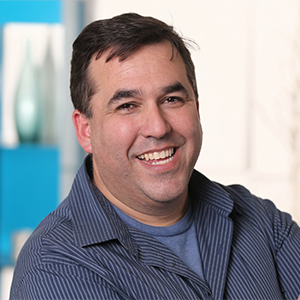 Catfishing your way into success isn’t typically well-advised, but that’s exactly how Dave Peck made his name. Well… sort of. Under the alias of a female avatar named Britney Mason on the original virtual universe Second Life, Dave went from insurance broker to social media and digital marketing expert in just a few years.
Catfishing your way into success isn’t typically well-advised, but that’s exactly how Dave Peck made his name. Well… sort of. Under the alias of a female avatar named Britney Mason on the original virtual universe Second Life, Dave went from insurance broker to social media and digital marketing expert in just a few years.
Today, he has been featured in countless media outlets and news shows, worked with seemingly every micro influencer and celebrity under the sun, and is head of social media and influencers at RingCentral.
So buckle up for that rush hour traffic, and enjoy Dave’s wild story of getting into the influencer marketing business and his advice on operating campaigns for conversion optimization.
Interview with Dave Peck
Perlu: Hello and welcome to the Perlu Podcast: Influencer Marketing Reimagined – a podcast where we chat with influencer marketing professionals, social media influencers, bloggers, YouTubers, podcasters – you name it – about what has led to their success. Today we’re speaking with a real social media guru, one of the early adopters of content strategy and social media marketing, Dave Peck. He’s the head of social media and influencer marketing at RingCentral, and he’s been an active contributor to integrated digital marketing strategy and online communities since 2004.
I’m your host, Alexis Trammell. We hope you enjoy today’s episode. Apologies for my nasally voice. I’m just coming off of a cold, but Dave’s the guy you want to hear from anyway. If you like today’s episode, we hope you sign up for Perlu to learn more about how you can grow your influencer marketing career.
Don’t Fall Behind. Be an Early Adopter of Perlu.
Schedule a Demo Today!
<As an Influencer> <As a Brand>
Before RingCentral, Dave Peck served as the CMO of KIND Financial as well as the head of global social and influencer at PayPal, where he oversaw the company’s social strategy and influencer relations as well as leading the development and execution of integrated digital marketing. And earlier in his career, Dave helped build online communities and developed social media strategies for several major brands, including Coca-Cola, Wells Fargo and the Grammys. He is also the author of Think Before You Engage: 100 Questions To Ask Before Starting A Social Media Marketing Campaign. Dave has been profiled or interviewed on CNBC, NBC, The Today Show and USA Today for his social media, digital and influencer marketing strategies, and we’re thrilled that today he’ll be sharing his influencer marketing insights with our Perlu members.
Thank you so much for joining us today, Dave.
Dave Peck: Thanks so much. Thanks for having me, Alexis.
Perlu: How did you first get into content strategy and social media marketing?
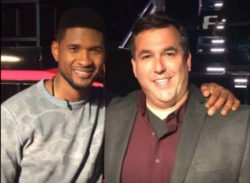
Dave Peck: So that is a crazy long story. I usually don’t share this with people, but you’ve got to remember the influencer social space has only been around for, well, 13 or 14 years now. So in my previous life, I was an insurance broker of all things.
Yes, that’s right. An insurance broker became at one point the head of social and marketing at PayPal and RingCentral.
So the other thing you need to know about me is I have five children. And when my twins were born, I would take the night shift and my wife would sleep, and then we would pass off like you do. And I got involved with what I call the first wave of podcasts. People were trying to figure out how to monetize it. How do you do some of this? This was before Ricky Gervais had his podcast – it was called the Podfather – things like that.
Now this little podcast I discovered, it was hosted by a former MTV VJ named Adam Curry, and I’d listened to it for a while. And then I got bored, and then I moved on. And then one night I was – I’m going to connect all these dots, by the way. There’s a bunch of different stories that are all going to come together –so I was reading one night an article about this thing called Second Life. And I don’t know if you’re familiar with Second Life. This is pre-Twitter, pre-Facebook. MySpace had just launched.
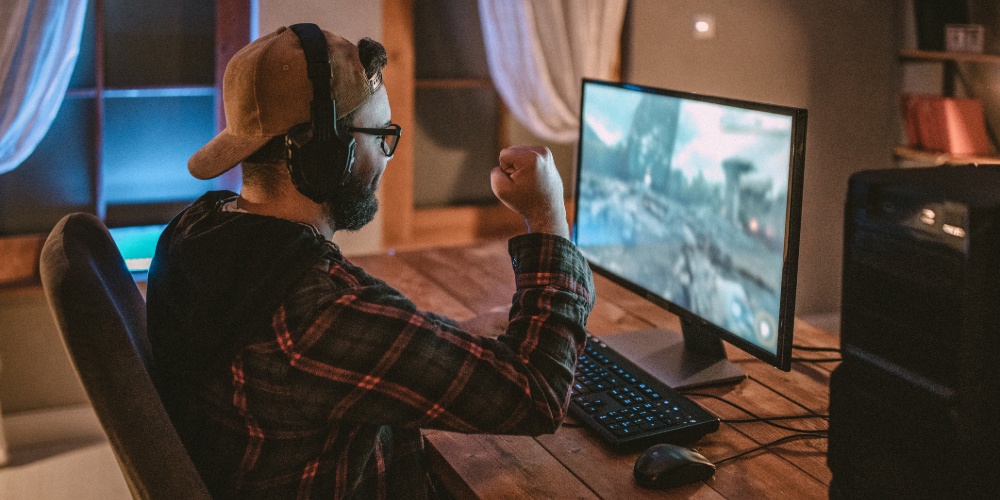
It’s a virtual world, kind of like the Sims. And so I said I’m going to join this thing. So when you signed up, you got to pick your name. So the magazine next to me – I never forget, was a US Magazine. Yes, I read this trash – and it had Britney Spears on the cover. So I created a character named Britney Mason. I pretended to be a virtual woman on the internet. … And so I went in there and started playing around. You’re moving your avatar around and things like that. And I’m just bored. There’s not a lot going on. A lot of bad things happen on there. You can use your imagination, because you can be anyone or anything.
All right, so let’s go back to the podcast, right? So I’m listening to the podcast and Adam Curry says, “Hey, I just discovered this world called Second Life. Come meet me.” I’m like, wait, I get to meet Adam Curry, this former MTV VJ and podcast host? Now mind you, there’s not a lot of podcasts at the time either.
So I go in as Britney and I meet Adam Curry, and I give him tips and tricks on how to build stuff. So the big currency there is selling virtual land. Let me do an asterisk right there. Virtual land would later become what we know as virtual goods, right? Skins. When you’re playing Fortnite, you buy skins and items like that. So this is like the early days of what that would become. So I started selling virtual land on behalf of Adam Curry. He gives me his credit card. How’s this for the original catfish, right? He doesn’t know my name; he doesn’t know I’m a guy.

Dave’s Avatar, Britney Mason
Perlu: Oh no.
Dave Peck: Well I’m making $3,000 U.S. selling virtual land and keeping the profits, because he doesn’t want any of it.
Perlu: Oh my goodness.
Dave Peck: Right? Is this crazy? And so now what happens is all these podcasters who are working for his company – he owns a company called PodShow, I should point out – come to the virtual island called PodShow Island and start buying land, and I’m keeping the money. Well then… XM Satellite launches.
Now remember, it’s 12 years ago. So it’s a novelty. They have a channel called PodShow on there. So all these podcaster shows are being syndicated there, and this gets a little confusing. What they would do is go back and say come find me on PodShow Island with Britney Mason. That’s my avatar, right? So all these PodShow people are talking about my avatar like it’s a real person, like I’m a real woman and everything like that. There’s no Skype, you can’t video chat with Skype, or any of that kind of stuff, mind you, at the time.

Okay, so now what happens is all these brands start going, “wait a second. What’s going on here?” And we were calling it new media; it’s not even called social. We didn’t have the term social media at the time. And so brands like Home Depot, Sears, are building virtual buildings where you could buy a virtual dishwasher for your virtual house. Wells Fargo has an island called Stagecoach Island where you can learn about banking in a virtual world. Most bizarre thing in the world, right?
Coke comes in and says, hey, we need help. Let’s hire Britney Mason. We’ve heard about her on satellite radio. So Coke hires me for my very first gig, not knowing I’m a guy, and I build out a campaign for them in a virtual world, designing “What does your ultimate Coke bottle look like?” Which then gets highlighted in Business Week, and things like that. And the avatar’s name is mentioned. And they’re paying me for this, mind you. Never met me. I’m using my wife’s name when I have to write the checks and they have to pay me, and her social security number for everything.
So then what happens is Stagecoach. Wells Fargo says, hey, we want help, and Wells Fargo hires me. So I start building out these virtual worlds, what would become social strategies and things like that, right? So then I end up doing a project for Berkeley. And I’m here in Silicon Valley; Berkeley’s right across the Bay here. And I’m like, you know what, I’m going to tell them I’m a guy. So I tell them I’m a guy, I come over, I do some work for them, and life goes on, right? So I’m making a living doing all this.

And then the young lady reaches out in December from Berkeley and says, hey, I’ve got a friend who is doing a documentary, and we’d love to highlight how does Second Life ramp up for the holidays? I’m like, okay. So I get on the phone with the person with one of the few people that know that my name is really Dave, and they started talking to me like, we want to change the whole documentary. We want to do it on you, and how you’re making money and pretending to be a woman on the internet.
Perlu: Oh cool.
Dave Peck: They say we’d like to come over to your house next week and film. So now comes the best part. I’ve got to tell my wife I’ve been pretending to be a woman on the internet because they’re coming to the house. I haven’t told my wife this. I’m supposed to be selling insurance during the day.
So I remember where I was and everything. I was standing in front of the TV and I said, hey, I have to tell you something. I’m pretending to be a woman on the internet. She’s like, what? But I have all the uncashed checks because I can’t cash the checks because they’re in her name. So I give her the checks. Well that shuts up the conversation and we’re done, right? So the next morning an NBC news truck pulls up, and Peter Alexander, who is now the head of their political stuff, pulls up and walks in my house. I’m like, wait a second, I thought it was a documentary. Well, it was supposed to be, but now we’re going to highlight you for The Today Show.
So they do a live broadcast. You know how on The Today Show they do three minutes of the segment, then you can watch the whole thing next week on MSNBC or whatever?
Perlu: Yeah.
Dave Peck: So that’s what it was. So they ended up doing the documentary on MSNBC. They highlighted me on The Today Show, and then teased it with that.

Okay, so my mind is blown, right? Because I thought I was just going to be in some one-off documentary. Well from there, I get highlighted; emails just start flooding me. Wells Fargo, Stella McCartney, Gucci, they’re all the same brand. Sergio Rossi, more reality stars than you can shake a stick at, and D-list celebrities whose names I won’t say, but I’ve been working with Bachelors and Bachelorettes, Big Brother, Survivor reality stars, tons of ’80s stars, and just blowing up. It’s just blowing up.
Okay, so now we’ve got to go back again. So remember that virtual world I mind, right? All the geeks and nerds – and I say that with love because I’m a geek and nerd – they’re off doing amazing things. One of them goes off and starts this little company called Twitter. A bunch of them go work at this company called Facebook. Several are working for what would become Twitch. One of my favorites is, I don’t know if you’re familiar with Justine Ezarik, iJustine?
Perlu: No.
Dave Peck: So she’s the gal that got the phone bill that had to be FedEx’d to her because it was so big.
Perlu: Oh yes. I remember that.
Dave Peck: One of the original YouTube stars.
Perlu: Yeah.
Dave Peck: A huge thought leader. Robert Scoble, Jeremiah Owyang, the founder of Vontage, Jeff Pulver, I can name drop all day. Well, everything’s tied back to Second Life. That was one of the first social networks in a way, right? You can be anywhere in the world and connect, and that would later be what Twitter and Facebook become. Right? So on and so on.
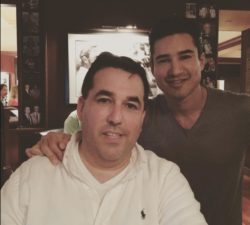
So everything’s happening. Like I said, I mentioned I worked for Wells Fargo for a couple of years, Gucci, I end up doing MTV, Ozzy Osborne of all people. The list goes on and on and on.
So one day PayPal comes along and makes me an offer I can’t refuse to launch their social practice. And the reason why it was the offer you couldn’t refuse is they had health insurance. Remember I have five kids. My wife says you’re taking this job, enough of the freelance. You can get health insurance benefits. So I go to PayPal. I end up working there for about five and a half years launching social, launching their influencer practice. And from there I leave and I’m always an early adopter. So I’m always looking for the next trend. So then I go to KIND Financial, which is a cannabis company but on the technology side. And then I left there, and now I am at RingCentral reinvigorating their social program, and then launching their influencer program.
Perlu: Wow. That is an insane story.
Dave Peck: It all started with a little avatar named Britney. So I wrote a book in 2008 on social media marketing, and the book is dedicated to Britney.
Perlu: This book is dedicated to Britney.
Dave Peck: Who doesn’t exist. Yes.
Perlu: Wow. And what great timing for you to have gotten into that and start monetizing that right at that time.
Dave Peck: Just dumb luck. And I love that I can always tie everything back to Second Life. And every now and then I’ll be at an event or a conference and somebody will call me up and call me Britney, who goes back to the days we were on Second Life. They remember it. But it’s fun how I keep using the Fortnite example where you buy skins, and it’s been around for all Call of Duty. Everybody’s been doing it.
But that all goes back to the original Second Life. That’s where it kind of started in a way. And it’s not me saying that; it’s credited in other people’s books. Or Twitter and Gmail and Skype with video – we’d all pass the alpha or beta invites around from that same little group, and we’d move as a pack.
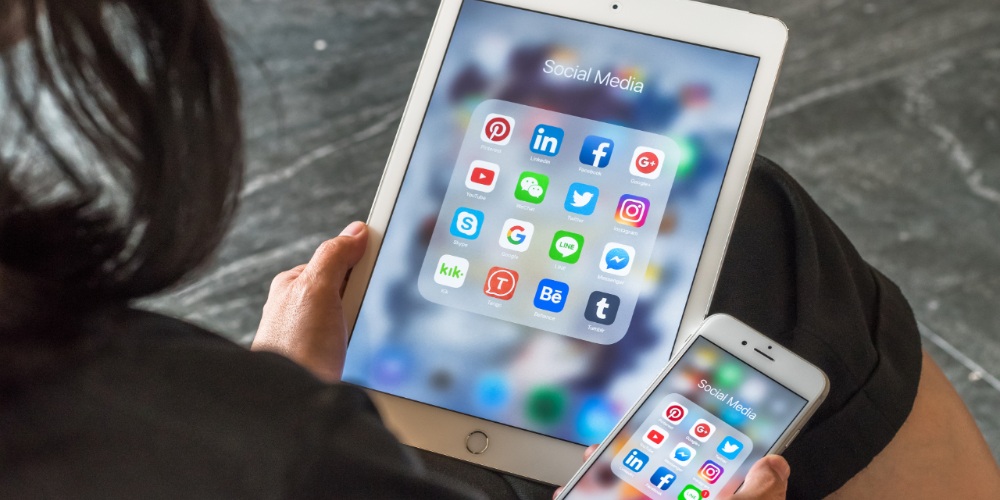
I’d love to do a whitepaper on it one day, when I’m really bored, on how we moved from Second Life to Twitter to Facebook. It just goes on. Anything that would launch, I’m forgetting all these social networks that failed. But things like that, you know? Foursquare. One of those guys, the founder of Foursquare, was on Second Life with us.
Perlu: That’s incredible. That is so crazy.
Dave Peck: It’s weird.
Perlu: It’s weird how fast those things snowball, too, whenever you just jump on it right at the right time.
Dave Peck: Yeah. So everything I’ve said is probably within two years, right? If not a year and a half, right? From being a simple insurance agent to speaking at conferences on social media or one of the original 140 Twitter conferences I spoke at back in the day. So on Twitter, they used to have recommended users in the corner, and when you signed up, they would force users on people to follow. So I saw this screenshot on the right-hand corner where it’s me, I don’t know if you know Leo LaPorte, who’s still got a radio show, TWiT TV and stuff like that. He used to be on CNET Network. And then, oh, Al Gore. This makes no sense. Right?
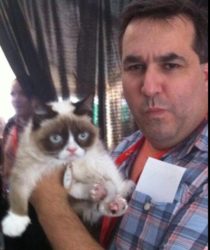
But you know, Ashton Kutcher hadn’t joined Twitter yet doing the race with CNN to a million people. Like you said, it snowballed. We’re early adopters. And anytime a new app comes today or a new network, I’m always joining early just to check it out, you know? TikTok, right? I’ve been on that for, God, close to a year now. You know what I mean?
I shouldn’t be on it. I’m not the demo. But I like to look at that stuff and figure out how can I use it in business, right? You know, connecting the dots. Strategy.
Perlu: Definitely. Definitely. Oh my gosh. Yeah. Big perk of being an early adopter.
You’ve been in this industry for 15 years now. How have you seen the influencer marketing world evolve since then?
Dave Peck: Well first, coining the phrase would be one, right? It didn’t exist. It’s really evolved with brands, right? Brands have figured out that, hey, we need to hire these people to evangelize for us. And it used to be they would just throw tens of thousands of dollars. I’m just forgetting all the names of these different companies. There used to be companies that would hook you up with the influencers and things like that. You could just send them on their platforms and send the request to do it. Now it’s more of a one-to-one relationship, where someone will introduce you to them. And now agencies like CAA have gotten involved.
And then it’s definitely gone from, “you’ve got a million followers, I want to give you $1,000,” to, “yeah, you’ve got a million followers, but can I see your data? And do they engage? And how many clicks do I get?”
There’s a lot more measurement than there used to be. It was free money back in the day. Right? And now it’s all about measurement.

And I can’t say that enough times. I see it more and more when they’re hiring for head of social or social media manager. They want to hear in that interview that you measure data and you’re working with data, where even five years ago they wouldn’t say that.
I think that’s a huge thing there. And then this is an old term, but I still think it’s applicable today, is the rise of the micro-influencer, right? Or the hyper-local, as I like to say. I’d rather work with an influencer who has a thousand followers that happens to be in fashion and gives me the data, like the clicks and Google Analytics and Bitlys, that show people are engaging with your content, versus someone with a million people who take no action. Or you have a hundred followers, but they all happen to be CEOs. People don’t see that, didn’t do that, even five years ago.
Perlu: Yeah, that’s a big shift there. And so on that topic though,
Can you tell us about a time when an influencer marketing program had a particularly excellent ROI, and what contributed to that success?
Dave Peck: Yes… So several years ago, we worked with an influencer who’s really well known on TV, and we did a campaign where we gave away like $50,000, long story short. So his job was to push out on his social network and get people to show up to that landing page and sign up. So he pushes out all the content, and he’s a wonderful guy, and he was wonderful to work with, and I still talk to him to this day, and he drove more traffic than we ever had to that landing page. And I got a pat on the back, a big thumbs up, and an award. You know, I couldn’t have done better.
Okay. I don’t tell you that story to brag, because I’m going to tell you the negative thing that happened. That same campaign was also the least successful campaign for conversions.

So you can hire an influencer like this guy, who is amazing, and they can drive all the people, but if your content sucks on the other end, there’s nothing that he can do about it. Because they’re like, we didn’t get clicks. We got more traffic than ever. And I’m like, I don’t control that landing page. He doesn’t control that landing page. That’s back on you. So you do what’s called a postmortem afterwards, right?
Perlu: Right.
Dave Peck: And you look at it. Or a heat map. And the sign up was in the top right. It was five clicks for the person to complete. It was too complicated.
So the moral of the story is you can have the best influencer in the world and the most successful campaign, but if the content on the other end, which you usually don’t control…[is bad], then the campaign won’t work. So you need to have a seat at the table with social influencer people. You need to be part of that. You might just sit in the corner and mind your own business, but if you’re held to that KPI. You need to be part of that process. And luckily I was not held to that KPI.
Perlu: No, yeah. That’s a really great point, and I don’t feel like anyone’s brought that up on this show before. And the influencers don’t have a say in how that landing page performs. Wow, that’s a very powerful story.
Looking to Work with Reliable Professionals in Influencer Marketing?
Dave Peck: Yeah. So if I’m looking for a job or in between jobs or getting hired, I always say I want to know what I’m being held to. Because I don’t want to be held to the landing pages. If you want to give it to me and I get to create it and run the team, that’s a different story. But I don’t have a say in it. And if it’s not set up as well as it could be or the content s isn’t great there, how is that my fault? I did my job.
Perlu: Exactly. Right.
Dave Peck: I’m getting angry now.
Perlu: He’s getting fired up.
Let’s talk about content vs. audience.
Some marketers say that there are two distinct ways that the brands perceive influencers. They see them as content creators and integrate them into their content strategies, perhaps through a blog or a video or photography. And the second way is when brands want to tap into the influencers’ audiences, like Instagrammers or celebrities. What are your thoughts on this differentiation?

Dave Peck: I’m more of a number two guy, that the brand is tapping to an influencer’s audiences. It drives me nuts. You might have a fancy title at a company – head of influencer marketing, right? Which means nothing when you go to the grocery store. But people will come to me and go, hey, I just signed up influencer X, Y, Z. Here’s the contract. Go make magic happen. After I get done at yelling at them for signing a contract and not telling me about it – that’s a whole another argument – but the contract will not say anything about the influencer sharing the content to their audiences, or hosting the content on their channels. I’m not paying you $50,000 to have you make me a YouTube video that lives on X, Y, Z company’s channel, right? I want it to live on your channel. I want to hit your audience. So that’s what you’re paying for.
And so I’m definitely the second example you gave kind of guy. You can take that content maybe 30 days later, assuming that you own it, and I think it needs to be in a contract, right? Because a lot of the poachers will take it down after 30 days, and put it on my YouTube channel or my blog later. But I want that aha moment, or I want to own that moment in time where it hits your network, hits your channel, you share it out. So I don’t know why people don’t do that all the time. It baffles me.
Because I’m talking to myself, right? I’ve already had people following me or engaging with me. Right? I want to get more audience share. I want to reach out to outside the bubble, as I call it.
Perlu: Are you in favor of the brand resharing what the influencer already posted?
Dave Peck: Yeah, but I’d wait a few weeks or 30 days. Because then you get into SEO and weird stuff like that with the same content. I want to wait 30 days, let them do their thing, and then put it up on my channel while keeping it up on theirs. I don’t care about the SEO juice necessarily, but some people might. I personally am like, whatever. You know? Because the content will disappear anyway. It’s not going to be impactful after a month or two.
Perlu: Okay.
Dave Peck: So yeah, I want my money to work harder and smarter, right?
I don’t want to just pay for content; I want to pay for content and audience. If they’re a thought leader or an influencer, I want them to evangelize on our behalf.

Perlu: Yeah. Yeah. So you spoke about this a little bit earlier. I’m curious:
How do you decide when you should work with a micro-influencer and when you should work with a mega-influencer or celebrity?
Dave Peck: So not an easy answer, first of all. So I need to understand what does a win look like? So when the business unit, head of the unit, comes over and says, here’s what we want to do, I always consider myself to be like a shrink sometimes or a bartender, I’d like to say. Because they’ll say, we have this big campaign, and we want 30,000 people. Thirty thousand people to do what? Well, I want them to follow us. And then as you work through it,. No, you really don’t [want 30,000 people to follow you.] You want them to engage with your content and sign up for something. It seems so obvious, but it isn’t. From there I can say, okay, now I know what the call to action is. What you want. What a win looks like. Is it hyper-local, or micro-influencers as you call it, or a celebrity, a big name. I need to look at the data, like I mentioned before, right?
And a lot of these influencers get really weird about it, but you need to show me some data points that people take action. Engagement, right? A like. A share. A comment. A click. Some sort of action that helps me do it. So someone came to me once at one of the companies I work at and said, hey, we’re doing this big campaign in Minnesota. It’s two to four on a Wednesday. I want to share it. I’m like, why would I share it to our 5 million followers? You think the person in India is going to hop on a plane and come out to this obscure [event]? You need to be more tactical. That’s where I would do a micro-influencer, right?
You know, you can only engage with this opportunity in a certain time in a certain place. If it’s an always-on, or maybe a [two-week long] thing like I mentioned earlier with the one with the clicks, then you might want to go with a celebrity.

The other thing that comes into play is budget, right? If we already have the content, can I take what I would pay an influencer and put paid behind it and be very tactical and target the people I want, and will I get a great ROIt? Or could I take the same amount of money and go to a celebrity and do better? That’s really my filter at the end of the day. But it’s a process. Like again, what is a win, what’s the call to action, what are we measuring, what’s the budget? It’s a simple question, but not as simple answer. I know.
Perlu: Yeah, yeah. Of course. So I feel like you kind of touched on the answer to this next question.
When you’re working with micro-influencers, how do you choose who will be the right fit?
Dave Peck: Engagement. My answer is always engagement. I don’t care, like I said earlier, if you have a million followers. They could all be my mom’s friends and don’t do anything. Versus somebody with a couple hundred, and they all take action and they’re all CEOs. I need to look at the audience to figure that out. And then see where it fits in. I love micro-influencers or hyper-local folks. I have no problem with it. As long as their audience is passionate.
Perlu: When do you know if influencer marketing is even the right tactic for a brand?
Dave Peck: Well, the first one would be budget.
Can they afford it? Well, it’s funny. Everyone still thinks social media is free in 2019. You know, it does cost. You know that, right?
Second, is what’s the influencer’s content look like? Are they appropriate? Does it roll up to the brand’s goal?
Here’s the biggest one: can the brand wait for results?
So just because I tweet it on a Monday doesn’t mean the guy is going to show up on a Tuesday and sign up, right? It could take a while for the audiences to see the content. It could take a while for people to take action. Maybe the offer is something they don’t want right away. So you’ve got got to be able to have that tail at the end where you can wait a little bit. Versus paid marketing, because that’s usually the competition, between influencer versus paid is how I see it. And where you get instant results in anything. They have to have the temperament to wait. Because you’ve got to work with the influencer, create the content, review the content, all those kinds of things.
Perlu: Yeah, that’s fair.
You’ve literally written a book about how to avoid costly mistakes in a social media marketing campaign. Can you speak to us about some of the common pitfalls you’ve seen in the influencer space specifically?
Dave Peck: Yes. And quick side note. So when I worked at PayPal, my boss goes, “He wrote the book on social marketing.” I always had to say, “Literally.” That was like the running joke. Literally. And by the way, the book is outdated. Don’t read it. It’s so old it’s not even funny.
So one would be what I said earlier: the contracts. People aren’t putting the right things in the contracts. How long does the content live on the influencers’ channels? Does it live on the influencers’ channels? That’s my biggest red flag. I’d say eight out of ten times I see influencer marketing, they don’t put that in there. How many times is the influencer going to share it? Who owns the content? That’s the other thing. Most influencers don’t let you own the content, and then they take it down after awhile. I don’t think people realize that. So after 30 days, I usually see the content goes away, the brand relationship. Because they might work with Coke on a Monday, and 30 days later they start working with Pepsi. And that drives me batty.
The influencers hate it, but if it’s a big celebrity like we mentioned, and I’m writing a big check, they should be able to work with a brand in our space for at least 90 days.

Suck it up. I’m sorry. It’s the way it is. But we’re giving you a lot of money, and I need you to show some loyalty. And loyalty is another thing I like to bring up. I like to try to work with the same influencers over and over again. I don’t want it to be a one-and-done in the contract. I want it to be like three or four moments in time that we’re working together. And it might be over the course of a year. So this is not just a Monday contract. This is a 365-day contract.
If the influencer gets money… they know they’re going to work with this brand again. And we’ll probably re-up if everything goes well. So that makes them want to create better content and evangelize more. And then the other thing that happens is the influencer will [give a freebie].
So some of my favorite ones is they’ll post stuff like Throwback Thursday, and they’ll use that same content again. So I get another moment in time with that influencer and it didn’t cost me a dime more than I already paid. Because they know that we’re going to work with them and they’re going to work with us. Those need to be in the contracts, and they never are. Ever.
Perlu: What about copy-and-paste influencer marketing where you ask a billion influencers to say the same thing about your product?
Dave Peck: I like user-generated content, so I would never ask them to say the same thing. I’d work with them and show our brand book… what we stand for. We see ourselves as collaborative, or something like that. Go forth and make the content. Hopefully they throw those words in there and they’re smart enough to use the brand book, right? But I would never force it upon them. And I don’t want to review their content either. I want it to just be natural.
So one of them, he’s a Snapchatter, I think he’s still around. His name was Shonduras… One of the most pleasant experiences I’ve ever had working with an influencer.
So we walked into the brand and he came up with the idea. He asks what would people do if PayPal didn’t exist? How would they get their money? … And he snapped it out to his followers and they all created these amazing videos. I still remember the one with a turtle that had a dollar bill taped to its back and he’s walking, or someone would drop it with a rock outside a window and hope you catch it, and things like that. And so everyone in his community created their own content. They didn’t hear from me, they heard from him.
And that’s the stuff I love. I’m getting excited talking about it. I’ve got to find the videos. It was really cool.
Perlu: What is your best piece of advice you could give a brand that is trying to break into influencer marketing for the first time?
Dave Peck: Go small. Work with what we call a micro-influencer. You need to know what your brand stands for; what’s your mission? What’s your goals of the campaign? And work with them directly. I know there’s always a middle man, but it’s best that you work directly with them and get them on the phone for an hour and just walk them through. That’s where I’ve seen the most success, where they get to understand what you’re trying to accomplish and what you stand for.
Find the Right Influencers for Your Brand’s Campaign
Again, with Shonduras, we had a sense of humor as a brand. So we didn’t mind that. So you need to educate them on that and the content you want and what it looks like. And I think I’ve said it twice now; I’ll say it three times. Don’t get caught up on the million followers and the 30 million followers. Measure engagement. You want a click. You want people to do something. You don’t just want them to watch a YouTube video and walk away. You want them to go to a landing page. Have all your measurements set up. Bitlys, Google Analytics. Make sure the influencers are using the same tools as well so you can get that all in a nice pretty wrap up report at the end.
Because this is the business we’re in. There’s money changing hands, and we need to have a return on our investment. It’s not always about awareness. I’m big on awareness, but it’s not always about awareness.
Perlu: Absolutely.
How do you scale that approach with so many micro-influencers you may be working with?
Dave Peck: So I will use an agency, usually, to help manage, or have someone internally do all the influencer relationships. Which is really fun. It’s a great job to have if you ever get it. And working with each one of them and answering their questions.
Identify them ahead of time. Because usually an agency or a company will come back and say here’s 20 influencers, get it down to 10. And they’ll go through it and help scale it that way so you’re not biting off more than you can chew. And then just starting small and working out. If you work with that one person for a few months and you’re comfortable, add another person. Don’t try to boil the ocean. You know?
Perlu: Right.
Dave Peck: And then reviewing all the content. So it’s a slow sink compared to paid media, like I mentioned earlier. You’ve got to have the appetite and build something for the future.
Perlu: What is the funniest or most memorable experience that you can share about your interactions you’ve had with influencers in the past?
Dave Peck: So one of the fun ones I had was working with Daymond John from Shark Tank, and we did a mock Shark Tank at SXSW, if you’re familiar with that event. He was amazing. Amazing to work with.
That’s an example of one where we work with over the course of a couple of years. I use him again and again. Because he was easy to work with and he was fun. So prior to SXSW, we did this campaign called PayPal Duel, where we’d get six sets of businesses and they would battle their way to come through SXSW on our dime, and then presented to Daymond John. And it was a hoot –watching Daymond do the whole Shark Tank thing in real-time on stage and challenging the people. They had a sense of humor. It was one of the funnest things I’ve ever done. It worked out really well.
Then Good Morning America came in, they broadcast live from the event because of Daymond….
And there’s probably many others that I’m forgetting. I’m blessed to have worked with some amazing people and famous people and reality stars, and it’s just crazy.
Perlu: That’s so cool. So crazy.

Where do you foresee influencer marketing going in 2020?
Dave Peck: I kept talking about measurement. I don’t think we’re done measuring it. I think the return on investment is really important to brands as budgets get tighter and you’re competing for ad dollars. And I see that being the first problem – that influencers need to make it easy for brands to measure.
I think the second thing is going to be you’re going to see more of it, but on a micro-influencer scale. Less Kim Kardashian, more Steve from down the street. But Steve’s got the right connections and the right neighborhood that I want to be with, but with the right type of goods that I want. Be it fashion or electronics and things like that.
Learn How to Know if an Influencer is Right for Your Brand’s Campaign
I think it’s here to stay. I just think it will be a lot more measured, and it might be a lot fewer influencers, I think. It’s funny, I keep seeing all my kids’ friends all starting YouTube channels and doing unboxing. Unboxing. Every one of them unboxes, but none of them are successful. And I think you’re going to weed out the competition that way as an influencer.
They all want to be unboxers. In fashion. Makeup, too. The other ones, all the girls, do the makeup in the high schools. I mean, come on.
And then competition. We kind of touched on it earlier. Going to networks as they launch. Like TikTok, which is hot right now. But as far as I’m concerned, it’s been around forever. Looking at those new platforms and getting there first and filling out your audiences, that’s how you really win. First to platform.
Perlu: Great point. Well, Dave, this was such a pleasure speaking to you today. Or should I call you Britney?
Dave Peck: Oh, there you go. Yes, it’s fine. Very cute, Alexis.
Perlu: Well, thank you so much. It’s been such a pleasure.
Dave Peck: No problem. Thanks for having me.
Perlu: Awesome. Thank you to everyone listening to our influencer marketing podcast. We hope you really enjoyed hearing from Dave Peck today. If you like our show and are interested in what it takes to succeed in influencer marketing, check out our blog at blog.perlu.com for more podcasts and blog posts. And sign up for Perlu at perlu.com to meet, mingle, connect, collaborate and grow your career. We hope you join us for our next installation of the Perlu Podcast, influencer marketing re-imagined.

